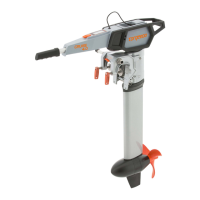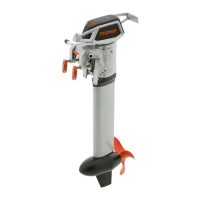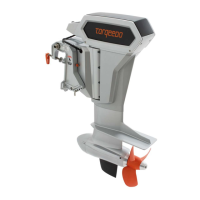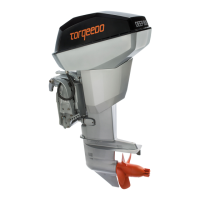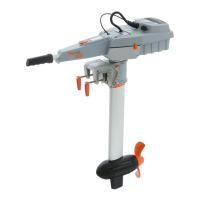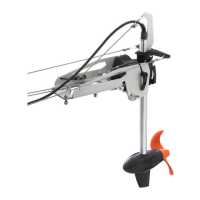16
Operating Manual Cruise 2.0 R / 4.0 R
8.5 Basic information on battery supply
In general the Cruise models can be operated with lead-gel, AGM or lithium-based batte-
ries.
We do not recommend using starter batteries as they can be damaged after a few cycles
if the discharge is lower. If lead-based batteries are to be used we recommend so-called
“traction batteries” or “deep cycle batteries“ that have been designed for an average
depth of discharge per cycle of 80 % as they are used for example in fork lift trucks.
So-called “marine” batteries can also be used. Here we recommend higher nominal
capacities so as not to exceed a 50 % depth of discharge.
To calculate the travel times and range of the batteries, you need to know the battery
capacity. In the following, this is stated in watt-hours [Wh]. The number of watt-hours can
easily be matched with the input power of the motor in watts [W]: The Cruise 2.0 R has an
input power of 2,000 W and consumes 2,000 Wh in one hour at full speed. The Cruise 4.0
R has an input power of 4,000 W and consumes 4,000 Wh in one hour at full speed. The
nominal capacity of a battery [Wh] is calculated by multiplying the charge [Ah] with the
nominalvoltage[V].Soabatterywith12Vand100Ahhasanominalcapacityof1,200Wh.
In general, lead-acid, lead-gel and AGM batteries do not fully provide the battery’s
calculated nominal capacity. This is in particular due to the high current capabilities of
lead batteries. In order to counteract this effect we recommend using larger batteries.
This effect is almost negligible for lithium-manganese batteries.
In addition to the actual available battery capacity of the boat type, the selected output
level (lower life and range at higher speed) and the external temperature also play an
important role for the range and life expected.
We recommend that you achieve the required battery capacity in Wh using as few parallel
connections as possible with as few big batteries as possible. So, to give yourself a battery
capacityofe.g.4,800Wh(at24V)itisbettertousetwo12V/200Ahbatteriesratherthan
severalparallelandseriallinkedbatteries(e.g.four12V/100Ahbatteries).Firstly,this
avoids safety risks from battery configurations. And secondly, capacity differences
between the batteries that already exist at the time of the configuration or that develop
later have a negative effect on the overall battery system (capacity loss, also called drif-
ting). Thirdly, this way you reduce losses at the contact points that can amount to 2-3 %
of the battery capacity.

